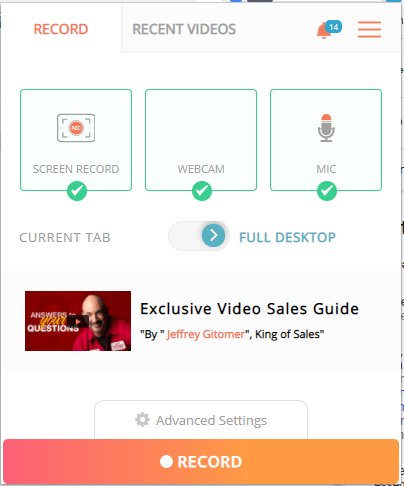Professor James Pennebaker from the University of Texas at Austin noted that in the history of learning research, the role of feedback has always been paramount: “When people are trying to learn new skills, they must get some information that tells them whether or not they are doing the right thing.” While feedback is widely accepted as essential for meaningful learning, it is often something that teachers struggle with the most. During the pandemic, as students and teachers have been thrust into uncharted territory with some or all learning online, feedback has become even more critical for student success. This has forced many instructors to get creative in the use of online tools to provide feedback in a number of ways. One such way, we can provide our students with timely and in depth feedback, is by utilizing a number of video tools such as Hippo Video that will help students grow in their knowledge and skills.
Why Feedback Matters?
While the term feedback is used to describe a wide range of comments in the classroom, feedback is elementally information about how we are doing in our efforts to reach a goal (Wiggins, 2012). Beyond value statements, advice, or simple evaluation, feedback is observable and always goal oriented. Supported by decades of education research, the idea that we can produce greater learning by teaching less and providing more feedback is recurring, (Bransford, Brown, & Cocking, 2000; Hattie, 2008; Marzano, Pickering, & Pollock, 2001). It is more than a grade, a checkmark, or advice, helpful feedback is goal-referenced; tangible; actionable; specific and personalized; timely; ongoing; and consistent (Wiggins, 2012).
In the traditional classroom, that feedback is an ongoing process of feedback loops between the teacher and the students as well as between students. In the online classroom, feedback can occur in online live sessions but for many instructors feedback is relegated to the comments inserted in a Google Doc. But is that the best or only way to provide effective and timely feedback? Not if you have a tech tool like Hippo Video.
What is Hippo Video?
Hippo Video is an easy video creation tool for teachers or students. It allows you to record a digital whiteboard explainer, lesson activity or lecture, interview through webcam or screen record an entire web browser, including audio to boost engagement rate and video for nonverbal cues. Hippo Video is browser based or you can utilize the Chrome extension to quickly launch it to use it with webpages or other applications. It offers a simple interface that allows you to login with your Google Account and record in just a few clicks. When you are done you can edit and export videos into multiple platforms or formats ranging from Youtube to Google Classroom to Google Drive or download them.
The Benefits of Feedback with Hippo Video?
So you have assigned an essay for your students. They turn it in through your LMS and you begin the long and often arduous process of providing comments and corrections. This can take hours and hours and I often find myself wanting to say more but feel pressured to give “timely” feedback. Then after I sent my written feedback, I still have students who do not understand or need more information to be able to improve their work. This is where using video feedback tools like Hippo Video really can help save time AND provide more detailed feedback for your students. With video feedback, you are able to provide detailed feedback in a way that is more economical for the learner and can be watched again and again to help them edit their work toward the specified goal.
Hippo Video is essentially a screencasting tool that allows you to record your screen, audio, and even video. In this application, I primarily use the screen recorder and audio to focus attention on the student’s work. Thinking back to Wiggin’s definition, helpful feedback is goal-referenced; tangible; actionable; specific and personalized; timely; ongoing; and consistent (2012). Using video feedback helps you to focus the students attention to their work and provide clear evidence of their learning and progress to their goal.
The video can be watched on any device and repeated if necessary making it tangible and very personalized to the student. Because you can quickly and easily produce unlimited quality videos, you can make this type of feedback timely, ongoing, and consistent as well. While, video feedback is a great way to utilize Hippo Video, you can use it to create a wide variety of videos for your students and they can even create their own videos to demonstrate their learning. Give it a try by installing from the Google Chrome Store.
References
Bransford, J. D., Brown, A. L., & Cocking, R. R. (Eds.). (2000). How people learn: Brain, mind, experience, and school. Washington, DC: National Academy Press.
Hattie, J. (2008). Visible learning: A synthesis of over 800 meta-analyses relating to achievement. New York: Routledge.
Marzano, R., Pickering, D., & Pollock, J. (2001). Classroom instruction that works: Research-based strategies for increasing student achievement. Alexandria, VA: ASCD.
Stenger, M. (2014). 5 Research-based tips for providing students with meaningful feedback. Edutopia, August 6, 2014. https://www.edutopia.org/blog/tips-providing-students-meaningful-feedback-marianne-stenger
Wiggins, G. (2012). Feedback for learning. Educational Leadership.Volume 70 Number 1 Alexandria, VA: ASCD, pgs 10-16.
Written by Heather B. Askea. Heather is an Instructional Technology Coordinator at The University of Virginia's College at Wise Center for Teaching Excellence. She is also a member of the VSTE Board of Directors.




